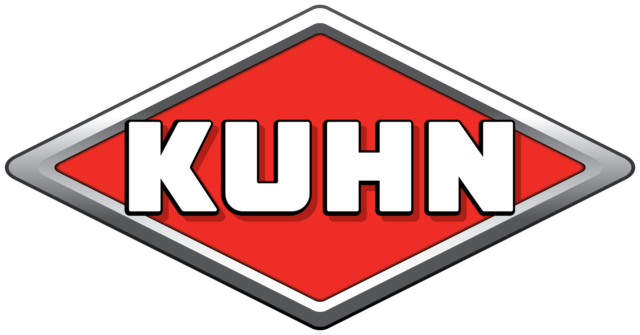If you had to choose just one cut of haylage to feed your milking herd for the entire year, which one would you select? I would hazard a guess that about 98 percent of producers and closer to 99.9 percent of nutritionists and veterinarians will choose the first cut.
First-cut haylage provides us with the most yield, good protein levels, and if harvest is timed properly, the opportunity to achieve the highest digestibility of any cut of haylage we will take.
It’s almost impossible to beat the protein per acre of a good first-cut alfalfa field (even if we do plant a little bit of grass or other forage with it).
By the time many of you are reading this, first-cut alfalfa will be wrapped up across much of the country, so you may be questioning my logic on writing an article about first-cut alfalfa that will be read right after it has already been harvested.
It’s because the management decisions to get the best first-cut hay or haylage crop in 2014 start now.
All of the decisions that we make between now and the fall can have an impact, either positive or negative, on how well our alfalfa fields overwinter, and subsequently, how they perform next spring.
My hope is that the following information will be valuable to your operation and make you think about how you might be able to improve current practices.
Plant maturity is by far the biggest driver of alfalfa yield and, even more so, nutritional quality. Unfortunately, these two factors are inversely related. As alfalfa plants mature, yield is increased (about 97 pounds DM per day); however, quality and digestibility are reduced.
Finding the right balance is important and may be different for every operation. Clearly weather plays a large role in terms of when we are able to harvest. Getting haylage off rain-free is more important than cutting it on the exact perfect day.
Haylage that has been rained on will have lower yield and quality due to in-field leaching of nutrients (mostly soluble sugars and minerals) and is at risk of going through a prolonged fermentation if proper management steps are not followed.
Forage yield expectations and the calendar also need to be taken into consideration when deciding when to harvest. Data from the Midwest shows that three harvests taken at 10 percent bloom will yield about 15 to 20 percent more than four harvests taken at the bud stage.
So if your operation is short on acres and needs to increase forage yields from alfalfa, choosing a three-cut rather than a four-cut system might be the best option for you.

Moving cutting to early bloom rather than bud stage does have some quality consequences.
Fiber levels will increase, protein will decrease slightly, and digestibility will be reduced. Full details are in Table 1 .
Making the decision whether to do three or four cuts and when to harvest them should be done with next year’s first cut in mind.
The key to a high-yielding first cut in 2014 is to ensure that your alfalfa has adequate root reserves to survive winter and maintain the high root energy levels needed for vigorous growth next spring.
The rule of thumb in northern areas may be to have a “no-cut window” from the first week of September until a killing frost (23°F).

Many studies have shown this to be a best management practice resulting in increased yield and persistence from stands that were left alone during this timeframe (see Table 2 ).
If we take an alfalfa cutting in mid-September when the plant is 6 to 8 inches tall, it will be entering winter with root reserves that are significantly depleted.
The lack of root reserves will cause spring growth to be much slower, or in some cases, even non-existent.
So if you can get four cuts in while still leaving your alfalfa stand with enough time to put root reserves down before a killing frost (45 to 50 days), then great, go for it.
If not, I would suggest three cuts and then shut it down. The yield you will lose on next year’s first cut is not worth the small amount of haylage you will take off with a fourth cut.
Harvesting late-fall alfalfa after a killing frost is a viable approach to increasing forage inventory without affecting the winter survival or subsequent spring yields. This would be a much safer idea than taking a fourth cut in September.
Inoculating late fall-harvested alfalfa with alfalfa-specific strains of bacteria is highly recommended because most of the fermenting bacteria (epiphytes) found naturally on the crop will not survive a killing frost.
Fall-grown alfalfa also contains more pentose (five-carbon) sugars compared to hexose (six-carbon) sugars produced during spring and summer growth. Pentoses are fermented to one lactic acid (three carbons) and one acetic acid (three carbons).
The production of acetic acid rather than another lactic acid typically results in a higher terminal pH of fall-harvested haylage.
Fertility is another key management factor in ensuring the viability of your alfalfa stand long-term. Manure after cutting is a common practice in some places and can go a long way toward helping subsequent yields.
One thing to keep in mind with manure application is that it is suggested you be on and off the field within four days of cutting it.
If you cut Monday and are not able to harvest until Thursday, forget about applying manure, as the damage you can cause to the crowns is significant after they start to regrow.

While manure is helpful, it cannot provide everything needed for alfalfa plants to thrive.
Table 3 shows the nutrient removal that comes with harvesting alfalfa.
Are you putting enough back on to ensure long-term production?
Making decisions now with next year’s first cut in mind can help improve the yield, quality and winter survival of your stands.
With rising hay prices, we need to be spending as much time managing our alfalfa crop for maximum production as we spend on our corn. The principles are fairly simple, and it makes economic sense today to maximize forage production from every acre we grow. PD







